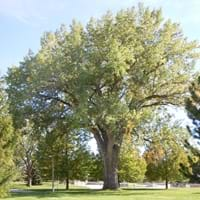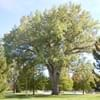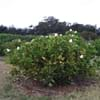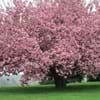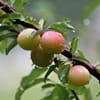Life Span
Perennial
Perennial
Origin
Northeastern United States, Mid-Atlantic United States, Southeastern United States, Central United States, Canada, Mexico
Eastern Asia
Types
Plains Cottonwood, Rio Grande cottonwood
Actinidia arguta, Actinidia giraldii, Actinidia hypoleuca
Habitat
bottomlands, Floodplain, Hardwood forests, Riverbanks
Dappled Shade, open Woodlands
USDA Hardiness Zone
3-9
3-8
Sunset Zone
1a, 1b, 2a, 2b, 3a, 3b, 4, 5, 6, 7, 8, 9, 10, 11, 14, 15, 16, 17, 18, 19, 20, 21
1a, 1b, 2a, 2b, 3a, 3b, 4, 5, 6, 7, 8, 9, 14, 15, 16, 17, 18, 19, 20
Habit
Upright/Erect
Vining/Climbing
Flower Color
Red, Green
White, Ivory
Flower Color Modifier
Bicolor
Bicolor
Fruit Color
White
Green, Yellow green
Leaf Color in Spring
Green, Gray
Green, Dark Green
Leaf Color in Summer
Green
Dark Green
Leaf Color in Fall
Yellow
Dark Green
Leaf Color in Winter
Not Available
Light Green
Leaf Shape
Toothed curved and flat petiole
Oval
Plant Season
Summer, Fall
Spring, Summer, Fall
Sunlight
Full Sun
Full Sun, Partial Sun
Growth Rate
Very Fast
Medium
Type of Soil
Loam, Sand
Loam
The pH of Soil
Acidic, Neutral
Neutral
Soil Drainage
Average
Well drained
Bloom Time
Early Spring
Spring, Late Spring, Early Summer
Tolerances
Drought, Soil Compaction, Wet Site
Shade areas
Where to Plant?
Ground
Ground, Pot
How to Plant?
Seedlings, Stem Planting
Grafting, Stem Cutting
Plant Maintenance
Low
Low
Watering Requirements
Keep ground moist, Requires regular watering, Requires watering in the growing season, Water daily during growing season, Water Deeply, Water more in summer
Average Water Needs, Requires regular watering
In Summer
Ample Water
Regular watering required
In Spring
Ample Water
Moderate
In Winter
Average Water
Average Water
Soil pH
Acidic, Neutral
Neutral
Soil Type
Loam, Sand
Loam
Soil Drainage Capacity
Average
Well drained
Sun Exposure
Full Sun
Full Sun, Partial Sun
Pruning
Remove dead branches, Remove hanging branches
Remove damaged leaves, Remove dead branches, Remove dead leaves
Fertilizers
fertilize in growing season, Nitrogen
Apply 10-10-10 amount, fertilize twice a year
Pests and Diseases
Aphids, Borers, Caterpillars, Insects
Botrytis head rot, Japanese Beetles, Leaf Rollers, Nematodes, Phytophthora, Root rot, Sclerotinia blight, Spider mites, Thripes
Plant Tolerance
Drought, Soil Compaction, Wet Site
Shade areas
Flower Petal Number
Not Available
Single
Foliage Texture
Medium
Medium
Foliage Sheen
Glossy
Glossy
Attracts
Not Available
Cats
Allergy
Hay fever, Headache, Runny nose, sneezing
Not Available
Aesthetic Uses
Landscape Designing
Cottage Garden
Beauty Benefits
No Beauty Benefits
Not Available
Environmental Uses
Air purification, Forms dense stands, Prevent Soil Erosion, Shadow Tree, Shelter for wildlife, Wildlife, Windbreak
Shadow Tree
Medicinal Uses
Anodyne, Anthelmintic, anti-inflammatory, Febrifuge
Antioxidants, Fiber, Folate, Rich in Potassium, Vitamin C
Part of Plant Used
Inner Bark, Leaves, Seeds
Fruits
Other Uses
Biomass for fuel, Used as firewood, Used As Food
Grown for shade
Used As Indoor Plant
No
No
Used As Outdoor Plant
Yes
Yes
Garden Design
Screening / Wind Break, Shade Trees
Edible, Feature Plant, Vine
Botanical Name
POPULUS deltoides
ACTINIDIA arguta
Common Name
Eastern Cottonwood
Hardy Kiwi
In Hindi
Eastern Cottonwood
हार्डी कीवी
In German
Eastern Cottonwood
Hardy Kiwi
In French
Cottonwood Orient
kiwai
In Spanish
Cottonwood del Este
kiwi hardy
In Greek
Ανατολική Cottonwood
σκληραγωγημένα ακτινίδια
In Portuguese
Cottonwood Oriental
kiwi Hardy
In Polish
Eastern Cottonwood
hardy kiwi
In Latin
Orientalium Poplar
Hardy kiwi
Phylum
Anthophyta
Magnoliophyta
Class
Dicotyledonae
Magnoliopsida
Family
Salicaceae
Actinidiaceae
Clade
Angiosperms, Eudicots, Rosids
Angiosperms, Asterids, Eudicots
Tribe
Not Available
Not Available
Subfamily
Salicoideae
Actinidiaceae
Number of Species
Not Available
Season and Care of Eastern Cottonwood and Hardy Kiwi
Season and care of Eastern Cottonwood and Hardy Kiwi is important to know. While considering everything about Eastern Cottonwood and Hardy Kiwi Care, growing season is an essential factor. Eastern Cottonwood season is Summer and Fall and Hardy Kiwi season is Summer and Fall. The type of soil for Eastern Cottonwood is Loam, Sand and for Hardy Kiwi is Loam while the PH of soil for Eastern Cottonwood is Acidic, Neutral and for Hardy Kiwi is Neutral.
Eastern Cottonwood and Hardy Kiwi Physical Information
Eastern Cottonwood and Hardy Kiwi physical information is very important for comparison. Eastern Cottonwood height is 3,050.00 cm and width 2,130.00 cm whereas Hardy Kiwi height is 550.00 cm and width 90.00 cm. The color specification of Eastern Cottonwood and Hardy Kiwi are as follows:
Eastern Cottonwood flower color: Red and Green
Eastern Cottonwood leaf color: Green and Gray
Hardy Kiwi flower color: White and Ivory
- Hardy Kiwi leaf color: Green and Dark Green
Care of Eastern Cottonwood and Hardy Kiwi
Care of Eastern Cottonwood and Hardy Kiwi include pruning, fertilizers, watering etc. Eastern Cottonwood pruning is done Remove dead branches and Remove hanging branches and Hardy Kiwi pruning is done Remove damaged leaves, Remove dead branches and Remove dead leaves. In summer Eastern Cottonwood needs Ample Water and in winter, it needs Average Water. Whereas, in summer Hardy Kiwi needs Regular watering required and in winter, it needs Average Water.
